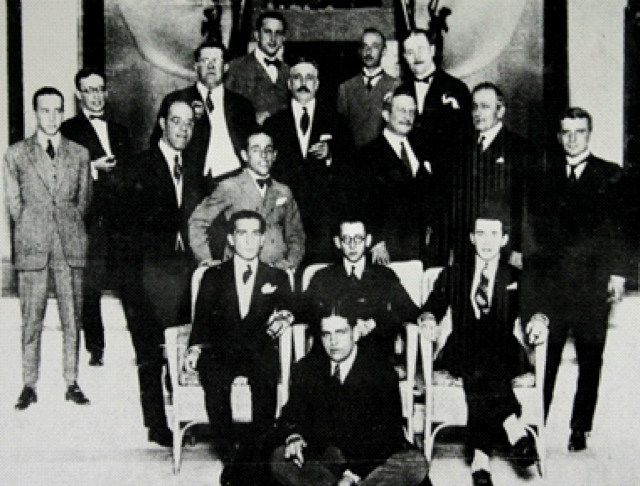More than 90 years ago the Revistas de Antropofagia (1928-29) began to be published, the project conceived by the heirs of São Paulo's ruling class was a frivolous attempt to unify what they considered Brazilian national culture. The end result was the explicit omission of Afro-Brazilian culture.

Fonte: https://vermelho.org.br/
The heirs of the great Brazilian coffee growers, once the former owners of slaves, decided to create from the Indian stereotypes a "legitimate" anthropophagic ritual. Hans Staden's book served as an inspiring source. Europe was once again the reference, while in São Paulo newspapers and magazines boiled over for the black public, even if on a small scale they were in no way taken into account in this process of cultural construction.
Brazil at that time was not prepared to face the open-minded prejudice against anything that would remit the culture inherited from the ex-slaves. The past should be forgotten or even incinerated as quickly as the documents proving a slavery past. No evidence, no crime. The manifestations of popular culture that had their origin marked by the Afro-Brazilian aesthetic were persecuted by the police and marginalized by society since its emergence. Samba, capoeira, and African religions are striking examples of this cruel exclusion. They were punished according to the resolutions of the articles of the current penal code.
The Constitution of 1891 guaranteed in its Section II, Art. 72 the inviolability of law and equality, as well as the right of all individuals to publicly practice their religious worship and confessions. Such religious freedom contradicted the Penal Code promulgated the previous year. African religions were persecuted and punished because they were associated with the illegal exercise of medicine, witch doctoring and the exploitation of public credulity. These factors were compounded by the fact that there was a fear among the general population associating Afro-Brazilian cults with demonic forces, condemned by most of the Christian faith. The changes within a century were hardly visible.
In recreating the picture in which the Movimento Antropofágico (Anthropophagic Movement) was shaped, the omission of Afro-Brazilians in this Brazilian cultural period is evident. A recent abolition, together with the prohibition of cultural manifestations coming from the senzalas, the absence of policies for the insertion of former slaves, the fall of an outdated monarchy, the rise of a republic formed through a military coup, and the continuity of the dominant slave thought, dictated the rules that followed in later years.
While the European avant-garde movements sought a break from the arts in African primitivism, Brazilian anthropophagous wanted to ingest European culture and turn it into something national instead of looking at the already existing culture spontaneously molded within the nation still in formation. It is obvious that a number of factors marginalized the culture inherited from the former slaves and made them undesirable elements.
Boaventura de Sousa Santos presents us in his sociology of absences that the "nonexistent" was created to remain invisible, this would happen due to unjust social relations. This absence is conscious because it allows for the naturalization of inequality between individuals considered qualified and unqualified.
From a post-colonial reading of the Movimento Antropofágico and its magazines we realize that they were created by a dominant class to meet the whims of the beneficiaries of this same class. There was no real interest in cultural inclusion. On one side we have a deeply racist, prejudiced and segregationist society, on the other side a movement that sought to create a Brazilian national culture and properly supported by the ideals of those who assumed economic hegemony.
It was practically impossible that the descendants of slave owners would have the fascination of swallowing Afro-Brazilian culture and transforming it into one of the bases of national culture. The best would be to ignore it or make it non-existent as it had been for centuries. Inequality was something natural.
On the one side a deeply racist, prejudiced and segregationist society, on the other an idealized movement that sought to create a Brazilian national culture duly supported by the ideals of those who assumed economic hegemony. There is nothing bold about a movement built on absences.
A society that was openly exclusionary, that did not recognize all its citizens as an integral part of the country, a constitution that functioned only in theory, a large majority of Afro-Brazilian women and men who had no opportunity for work, respected rights or future prospects were prevented from participating in this process of cultural formation. When we return to the past we realize how much it is reflected in the current Brazilian society and how much still has to be done to extirpate such deep roots.

Paola Azevedo Jochimsen Specialist in Latin American post-colonial literature, Master of Arts in Literature from the University of Freiburg. Graduated in Literature (Portuguese and French) from State University of Ceará), French language and Brazilian literature teacher.